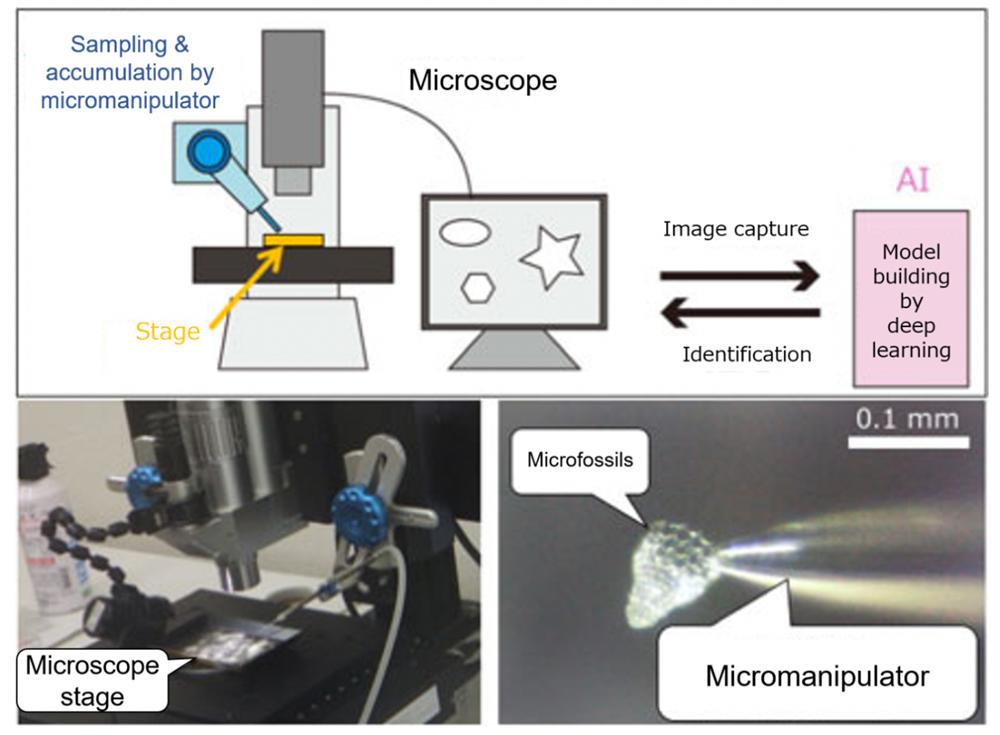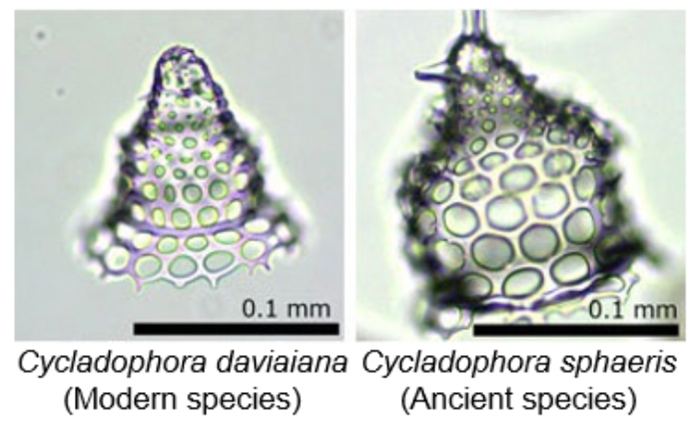New technology utilizing artificial intelligence has been established for accurate identification and sampling of microfossils
- Enabling high-speed automatic analysis of geological strata -
Summary of the AIST Press Release on December 3, 2018
>>Japanese
A joint development group consisting of Takuya Itaki (Research Institute of Geology and Geoinformation, Geological Survey of Japan), NEC Corporation, Micro Support Co.,Ltd, and Mitani Corporation has developed an innovative AI-supported system that can rapidly identify a large number of complex-shaped microfossils in other sediment particles.
Fig. 1. Conceptual diagram of the system.
Lower left: Microfossils are automatically picked up with a micromanipulator under the microscope.
Lower right: Closeup photograph of the manipulator tip.
Microfossils such as radiolarians, foraminiferans, and diatoms provide important clues to determine the age of the geological strata and to understand the environment of the time and further details. However, their complex shape and fragility requires even an experienced expert to spend substantial time and effort for the identification and separation.
The new system consists of a microscope and a micromanipulator connected to an AI. After an image is captured for identification and the location is recorded under the microscope, the specimen is picked up and separated by the micromanipulator. The system has significantly shortened the time required in both learning and operation phases, from years to months and from days to hours respectively. It can also deal with microfossils smaller than 100 micrometers, of which manual separation is quite difficult.
The system makes the analysis of geological strata far more efficient and is expected to be useful in oil exploration and many other areas. It is also applicable to other microparticles such as minerals and volcanic ashes.
Fig. 2. The new system can distinguish radiolarians with remarkably similar shape like those in the photos above with over 90% accuracy.



